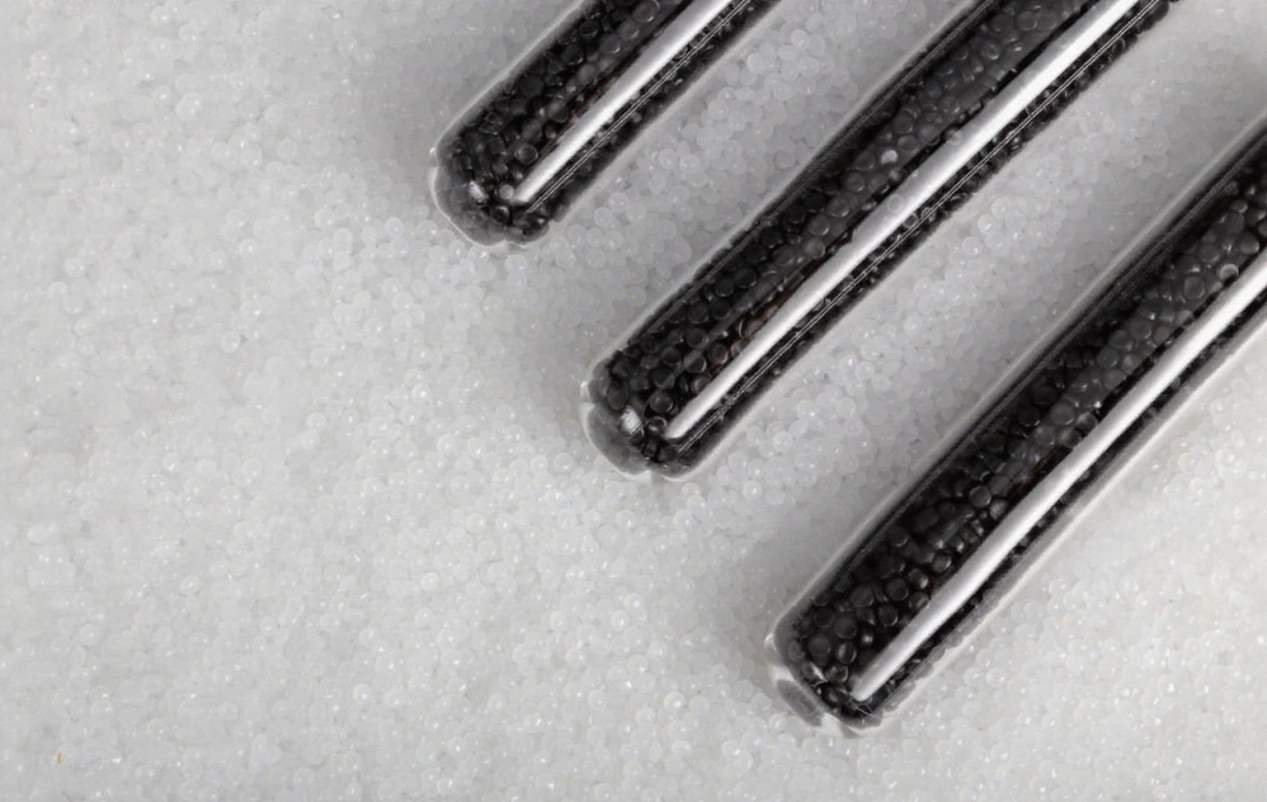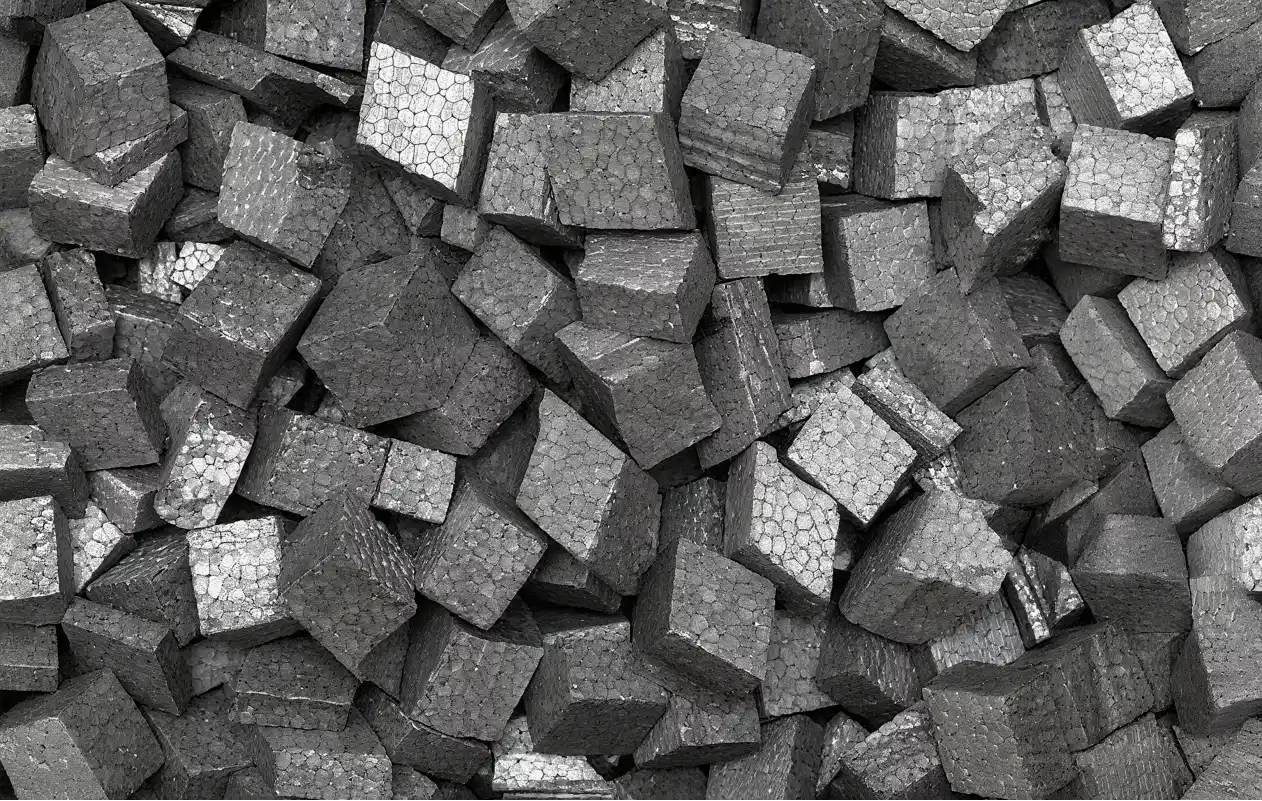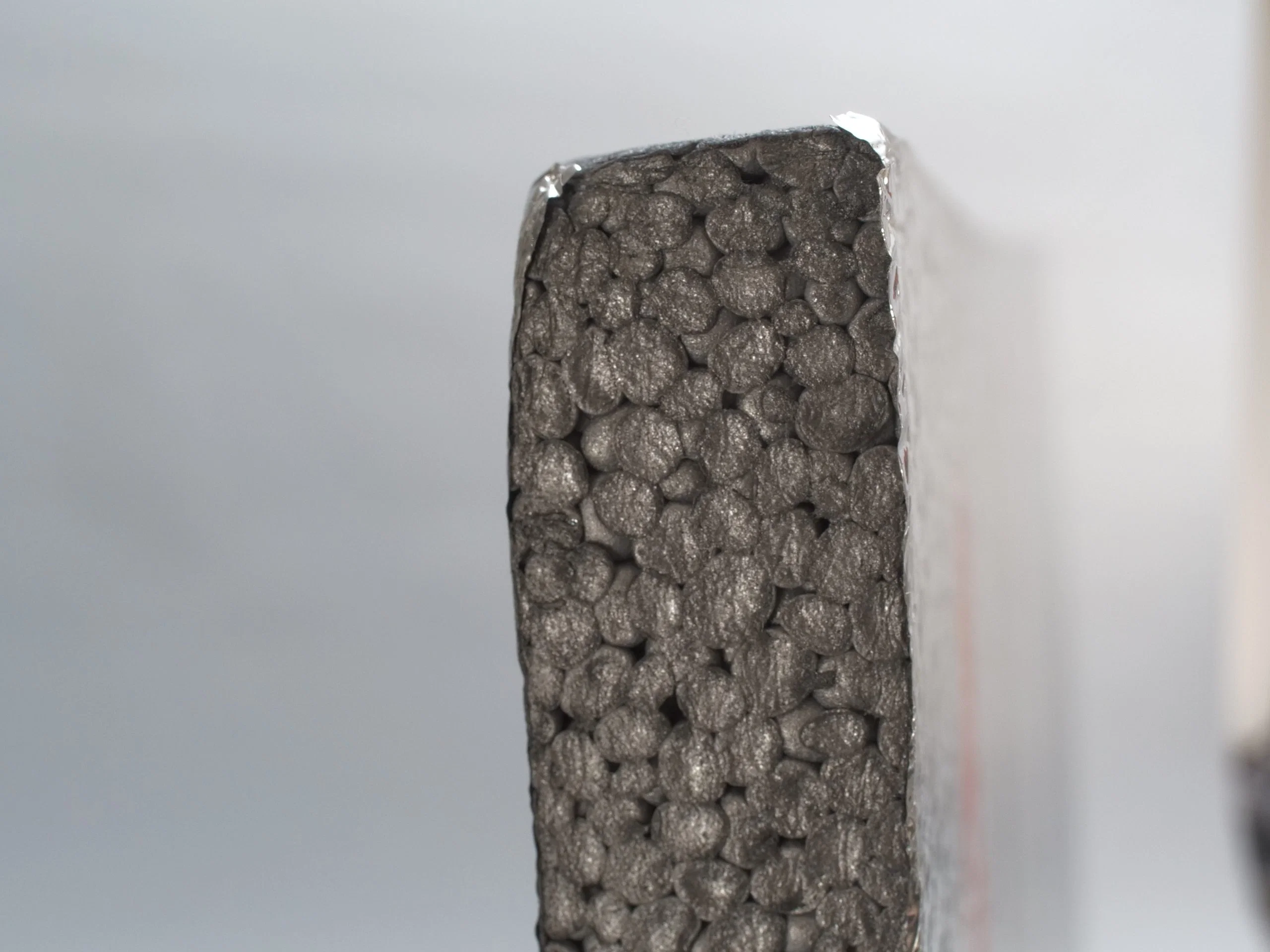The world of construction is shifting fast. Building energy-saving rules, like China’s Energy-Efficient Design Standard and the EU’s EPBD, are getting tougher. These changes put heavy demands on how well building shells keep heat in or out. At the same time, fire safety in tall buildings and big commercial spaces is drawing more focus. This has led to stricter fire performance needs for construction materials, especially those used for insulation. As a result, options that blend top-notch heat control with flame resistance are moving from a nice-to-have to a must-have. This trend is pushing materials like FGE carbon polystyrene into the spotlight as a growing market favorite.

What Is FGE – Carbon Polystyrene?
Getting to know FGE – carbon polystyrene starts with its basic makeup. This material begins with a polystyrene polymer foundation, crafted through a special mixing process. During this step, a dark, heat-resistant powder is added, giving it unique traits. The outcome is a solid, even product—often heavier than 18 kg/m³—that can handle tough conditions.
This dark powder brings excellent heat properties. It lowers the material’s heat flow to about 0.030 watts per meter Kelvin, better than the 0.038 for regular polystyrene. This helps keep buildings cozy in winter and cool in summer, possibly cutting energy costs by 15-20%. Plus, after special treatment, FGE graphite polystyrene earns a B1 fire rating. This means it resists flames more than untreated versions, adding a key safety boost for high-rise or business projects. The know-how behind this material comes from years of study, making it a steady pick for those who value strong performance.
Why Does the Construction Industry Need FGE – Carbon Polystyrene?

The construction world is under strain from rising expenses, safety worries, and green goals. FGE carbon polystyrene steps up with practical answers to these issues through its energy savings, cost reductions, fire protection, and eco-friendly benefits.
- Energy Inefficiency & High Costs: Buildings use nearly 40% of the world’s energy. Old insulation materials add to this waste. FGE graphite polystyrene’s low heat movement tackles this problem, lowering heating and cooling bills over time. This matters a lot as energy prices keep climbing.
- Fire Safety Hazards: The burn risk of traditional polystyrene has been a long-standing issue, especially in crowded buildings. FGE carbon polystyrene’s B1 fire rating eases this concern. It brings peace of mind as safety rules get tougher every year.
- Sustainability & Environmental Protection Needs: With green certifications like LEED gaining popularity, there’s a rising need for materials with a light carbon footprint. FGE carbon polystyrene’s recyclability and energy-smart production fit these trends. This draws in developers who care about the environment.
FGE – Carbon Polystyrene vs. Traditional Insulation Materials
To see FGE’s worth, it helps to look at some common insulation materials and compare them closely. Only then can you fully appreciate FGE carbon polystyrene’s strengths. Here’s a detailed breakdown and comparison of main performance factors.
- Thermal Conductivity: FGE carbon polystyrene’s 0.030 W/m·K beats standard EPS (0.038 W/m·K) and matches mineral wool (0.035 W/m·K).
- Fire Rating: FGE carbon polystyrene can reach a B1 fire rating, going beyond EPS’s E rating. It’s similar to polyurethane’s B2 rating but falls short of mineral wool’s A1.
- Compressive Strength: FGE carbon polystyrene’s strength can hit 100-150kPa. This makes it better than mineral wool (20-60kPa) for supporting weight. It’s also close to polyurethane foam (120-200kPa).
- Environmental Impact: FGE carbon polystyrene’s recyclable nature gives it an upper hand over mineral wool’s heavy carbon load.
- Cost-Effectiveness: Upfront costs are reasonable. The added efficiency brings long-term savings that outdo cheaper EPS materials.
FGE carbon polystyrene shines for its well-rounded performance. This makes it a good fit for everything from homes to factory builds.
Reasons to Choose HUASHENG’s FGE – Carbon Polystyrene
HUASHENG is a high-tech company focused on researching, making, and selling expandable polystyrene (EPS) foam. As one of the best professional graphite EPS manufacturers, the firm is dedicated to delivering high-performing, nature-friendly EPS material solutions. These solutions support uses like building insulation, packaging and shipping, and decorative building parts. This helps customers achieve lighter designs, energy savings, and sustainable growth.
In the area of building insulation materials, HUASHENG stands out with its FGE – Carbon Polystyrene. This section gives several reasons why its products deserve a closer look.

HUASHENG’s Technical Strength and Product Quality
HUASHENG uses world-famous techniques and smart production lines. This leads to top industry products in density, strength, and heat protection. Its FGE carbon polystyrene panels offer steady quality, a weight of 18 kg/m³ or more, great antistatic features, and low heat movement. These traits make them perfect for challenging projects.
Comprehensive Support and Customization
HUASHENG offers more than just supplies. Our team provides design tips and custom plans, ensuring each project gets tailored help to meet specific needs. We can create special EPS products, like unique versions of FGE – graphite polystyrene, designed to match your project’s particular demands. This allows quick responses to changing needs. Our skilled engineers work closely with clients, offering on-site visits and adjusting designs to boost performance. This could mean better heat efficiency or stronger structure. This personal touch saves time and lifts the success of tough builds. It makes HUASHENG a trusted partner in the field. Once, I saw a project where this kind of support turned a tricky design into a smooth success.
Commitment to Sustainable Development
HUASHENG holds ISO certification and uses 100% recycled materials. It also applies full environmental controls during production, cutting energy use by 30%. This lines up with global green goals. Its R-EPS process shows this commitment, pulling in clients who value the planet. HUASHENG plans to open a leading carbon-neutral demo plant by 2026. This aims to slash carbon emissions by over 85% across the whole supply chain, a bold step forward.
Conclusion
The rise of FGE – low thermal conductivity polystyrene mixed materials marks a big leap in building insulation. They blend top-level heat protection with solid flame resistance. This solves the long-standing challenge of balancing energy savings and safety in construction. Picking this new material is more than choosing a product. It’s selecting a forward-thinking building approach: getting the most energy efficiency while keeping safety and sustainability intact.
HUASHENG, using its deep knowledge of carbon polystyrene, is driving this shift. Through ongoing research and development, we focus on delivering high-quality products. These not only perform well but also meet the strictest global standards. For custom plans, please reach out to us at info@r-eps.com. We will offer personalized help for your next project. Join us today to build a safer, more energy-smart, and greener environment!






